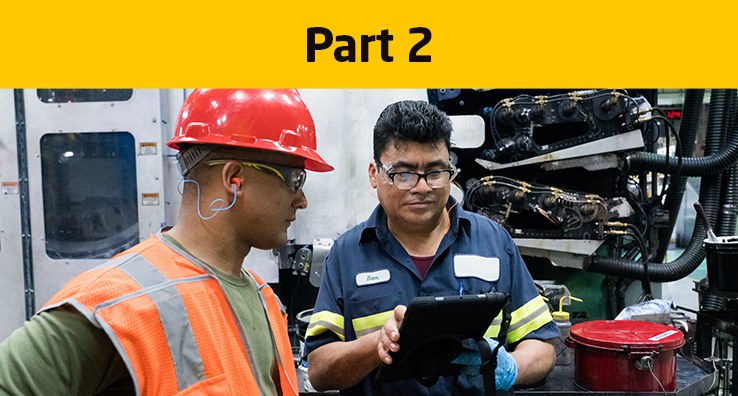Training Engagement Tips for Your Operations Leaders, Part 2: Commitment

In this series of blog posts, we are exploring the 4 Cs to Getting Operations Leaders Excited About Training with Bob Rysavy, HR Training Manager at Hearthside Food Solutions, and Kristin Kastrup, Senior Consultant, Training and Human Resource Optimization
It can be challenging to get your operations leaders to commit to staying on track with an ongoing training course. In this part of our conversation, Kastrup and Rysavy expanded upon the second “C” of the four core elements — commitment — and shared the best approach for dividing up responsibilities and ownership in a healthy training process:
Understand people’s expertise and passion to effectively bring them on board. Kastrup recommends having a firm grip on individual strengths and knowing who has expertise or passion in a particular area. This ensures that you have a cross-functional representation of people who are interested in the success of the business and will willingly step into a mentorship or leadership role. Plus, you will always get bigger buy-in from people who volunteer versus those who are “volun-told.”
Establish a field training team. This is a select group of people who serve as both subject matter experts (SMEs) and liaisons for the purpose of bridging any knowledge gaps between all departments and their particular team of SMEs. “They collaborate to ensure that we’re creating a consistent training model free of clutter and over-saturation,” says Rysavy.
What to Do If People Say They Are Too Busy
“This can be a tricky situation,” says Kastrup. But we’ve all faced this situation at some point in our careers. The key is to be prepared.
Have a response for “Isn’t that HR’s job?” Kastrup advises asking questions that focus on training and business outcomes to steer the conversation towards their role in the process and help drive accountability. To get started, you can ask questions like “What’s your role in that?” or “What’s important to you?”
Revise job descriptions for leaders. Kastrup recommends adding training responsibilities as part of your leaders’ job responsibilities. “You can also take that a step further and take a training activity and connect it to the business result,” she says. For example, if your company is attempting to raise retention, you should find ways to connect the dots between that goal and a robust onboarding program.
Give them a voice. Let them have some control within the enterprise training calendar. If they have 12 months to meet a certain goal, allow them to have say in how that should be accomplished by involving them in the planning process.
Show genuine empathy. Don’t fake it! “It’s pretty easy to take offense when someone says they’re too busy for you,” says Rysavy. So take a step back and show some empathy, because you get it — you’re busy too!
Don’t feel slighted, as their response is probably a cry for help. “And that’s the beautiful thing about our job,” he says. “This is where that interview comes in. Ask the right question so that we can recommit these folks to their original agendas.” This opens up a dialogue and gives you a chance to learn a little bit more about how you can help each other be successful.
Now we’ve started to touch upon the next “C”: Communication. In our upcoming blog in this series, we’ll explore the most important and meaningful things to communicate when looking to communicate more broadly to either other teams or the whole workforce.
Subscribe to our blog to ensure you don’t miss it!





